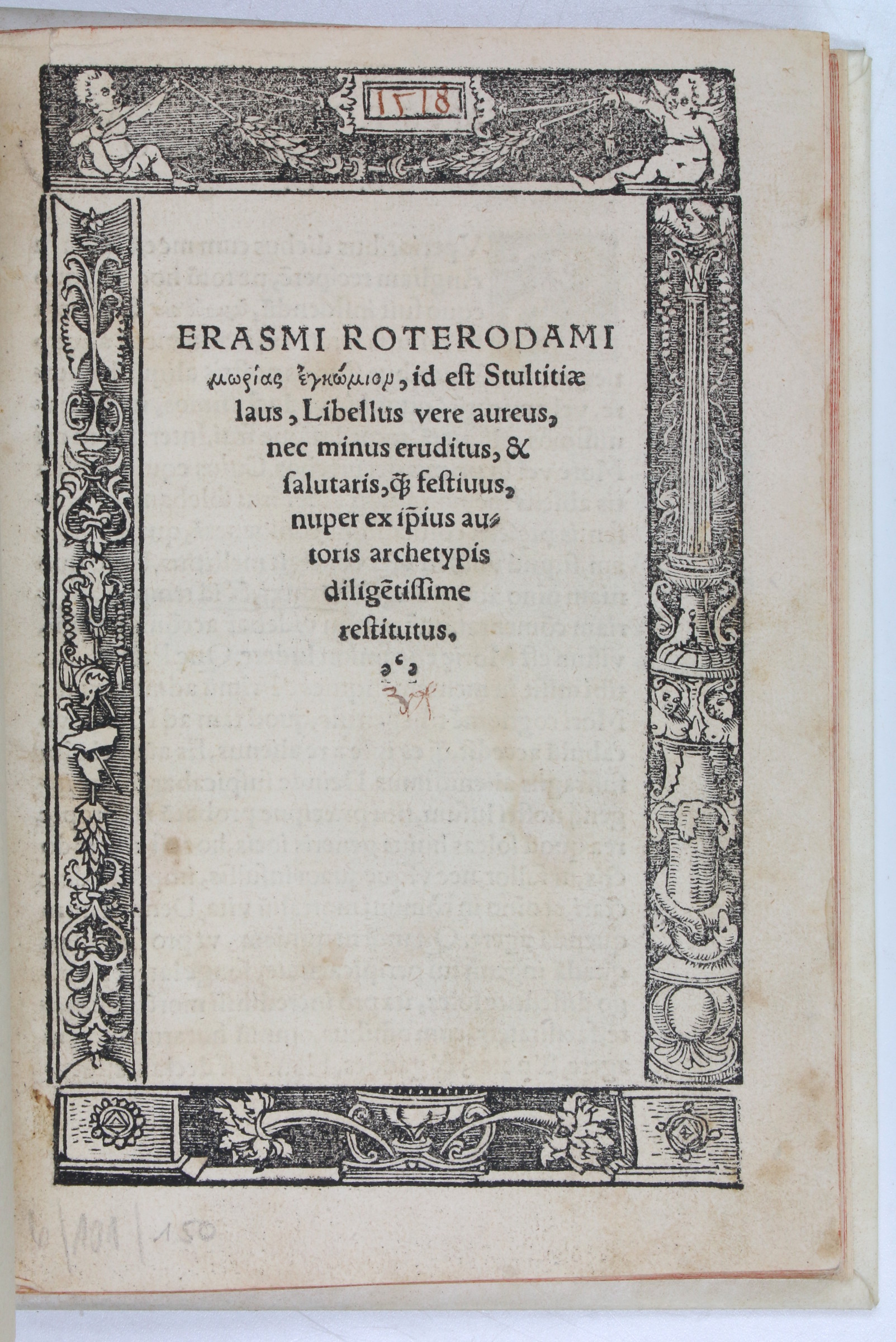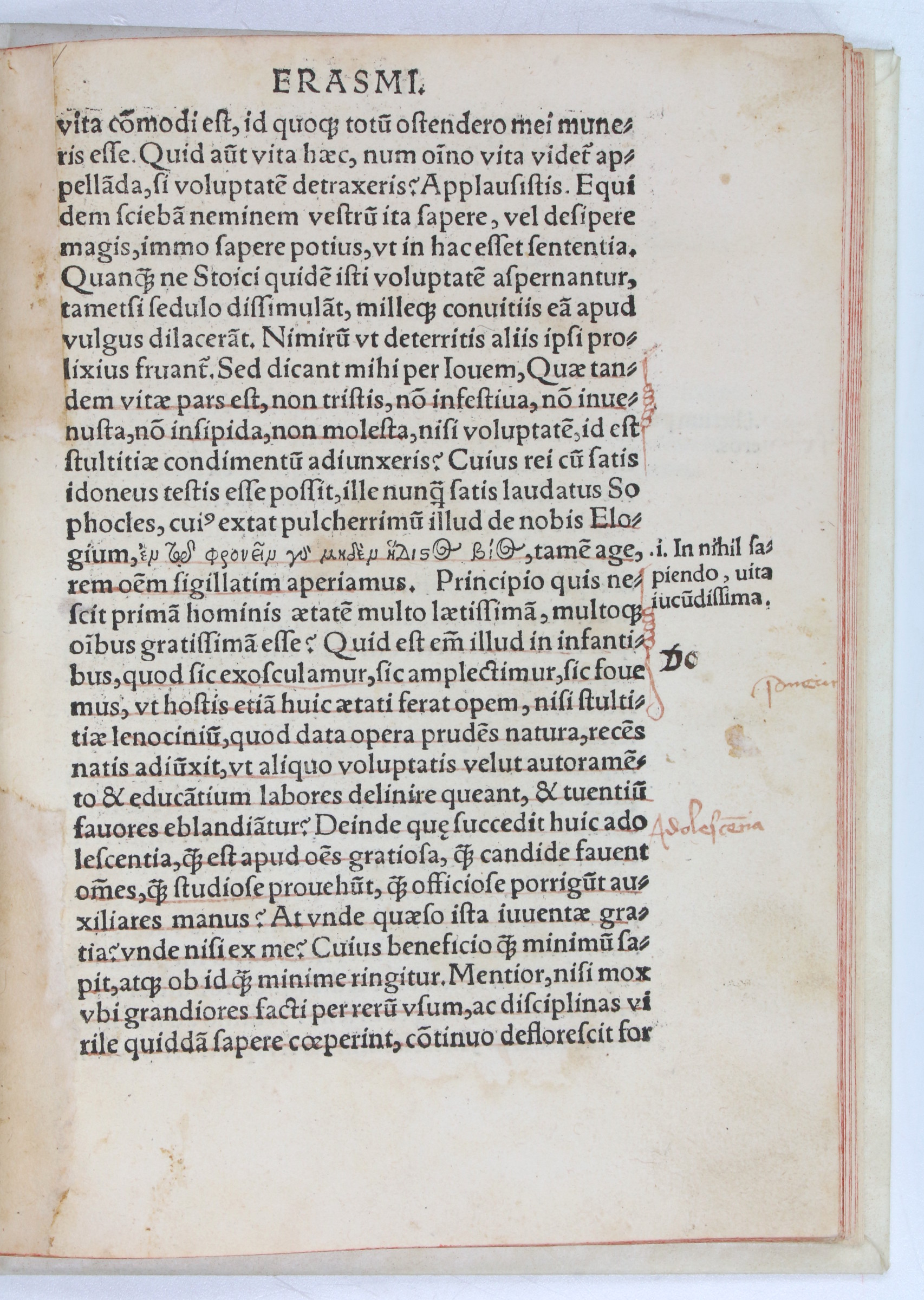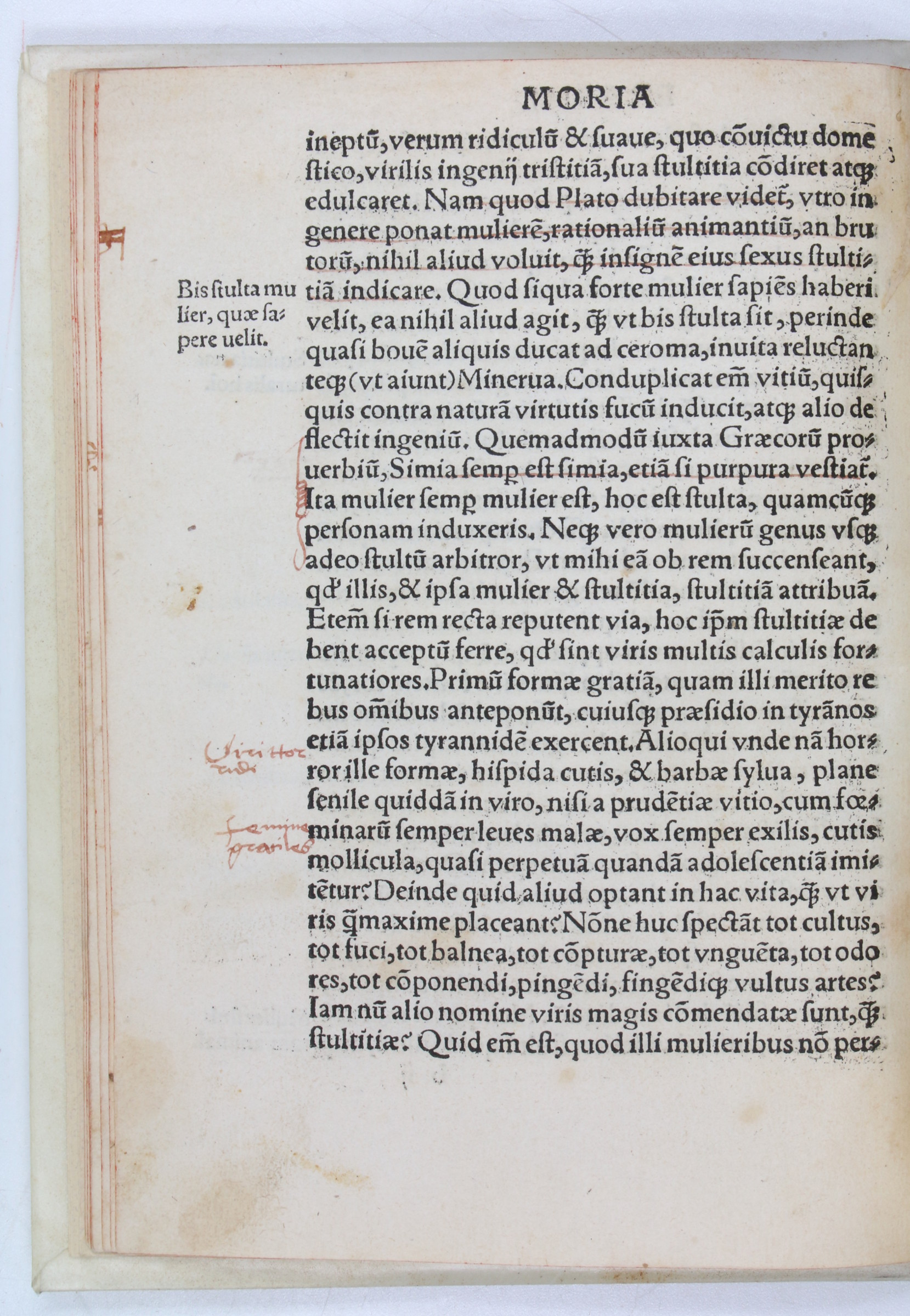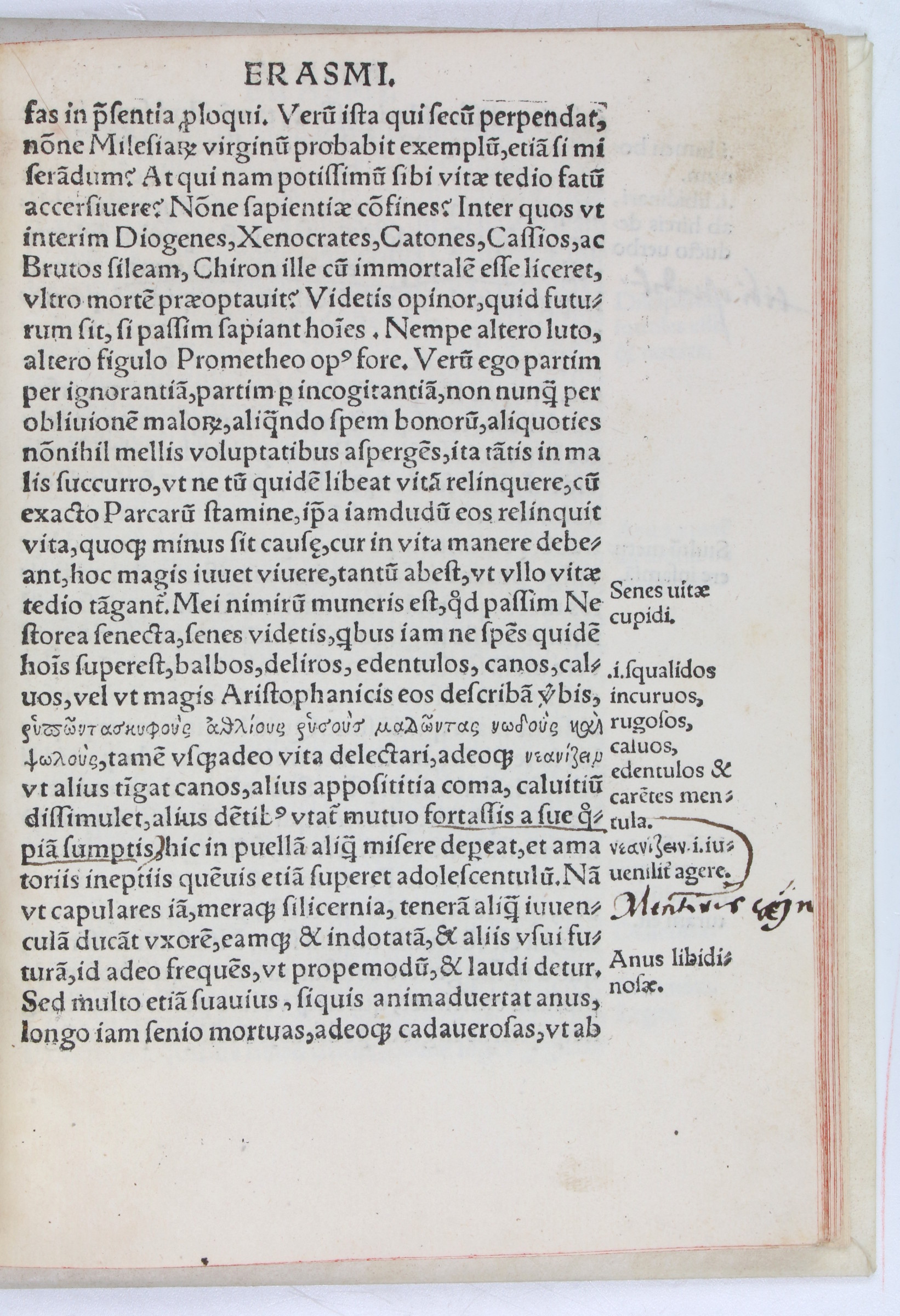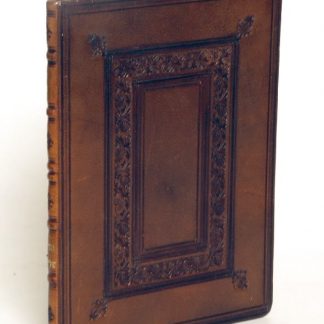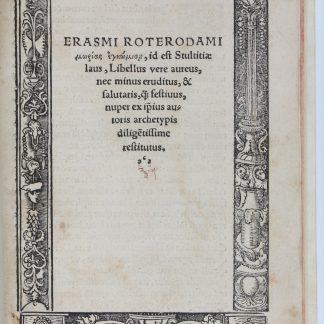Morias enkomion, id est Stultitiae laus, libellus vere aureus, nec minus eruditus, & salutaris, quam festiuus, nuper ex ipsius autoris archetypis diligentissime restitutus.
4to (198 x 145mm). 53, (1) ff. Historiated woodcut border on title-page, one white on black woodcut initial, some Greek type. Modern vellum, red edges.
€ 35.000,00
Rare early edition of Erasmus's "Praise of Folly", which was first published in Paris in 1511. Conceived by Erasmus on his journey from Italy to England, it was written in a little over a week during his stay at the house of Thomas More in London in 1509 (to whom the work is also dedicated).
More than a mere distraction or trifle, this work is an acerbic, humorous attack on the foolishness that ruled church and state in the period. "It satirizes the old learning, the old medieval world, the monks and friars, the pilgrimages and processions, the cult of saints, in a style of biting humour. Erasmus was a great humourist, subtly ironical and elusive" (F. A. Yates, Ideas and Ideals in the North European Renaissance [1984], 155). It was extremely popular, said to be enjoyed even by Pope Leo X; 35 editions followed its first printing in Paris. While its author remained steadfastly within the Roman Catholic Church throughout his life, this satire and the critiques it contained played a crucial role in the beginnings of the Protestant Reformation. Early versions of this work are hard to find.
In a letter written in May 1515, Erasmus himself described the book as light relief from the kidney-stone by which he was afflicted: "my library had not yet arrived ... so, for want of employment, I began to amuse myself with Praise of Folly, not with the intention of publishing the result, but to relieve the discomfort of sickness by this sort of distraction" (Praise of Folly [Oxford, 1913], Introduction, p. XIV). He had earlier, in a letter to More, described it as a "trifling thing" (Letter 222, June 1511, Correspondence of Erasmus Vol. II).
Attractive textual annotation in margins, in red ink in the same humanist hand (some lost to trimming of pages) that appears to have dated the title-page 1518, four years after publication. There is also sparser annotation in a second, later hand, in darker ink.
Worming to lower blank margins with loss of a few letters, repaired in gatherings E and F; staining throughout, some loss to title due to trimming.
VD 16, E 3182. BM-STC German 282.

